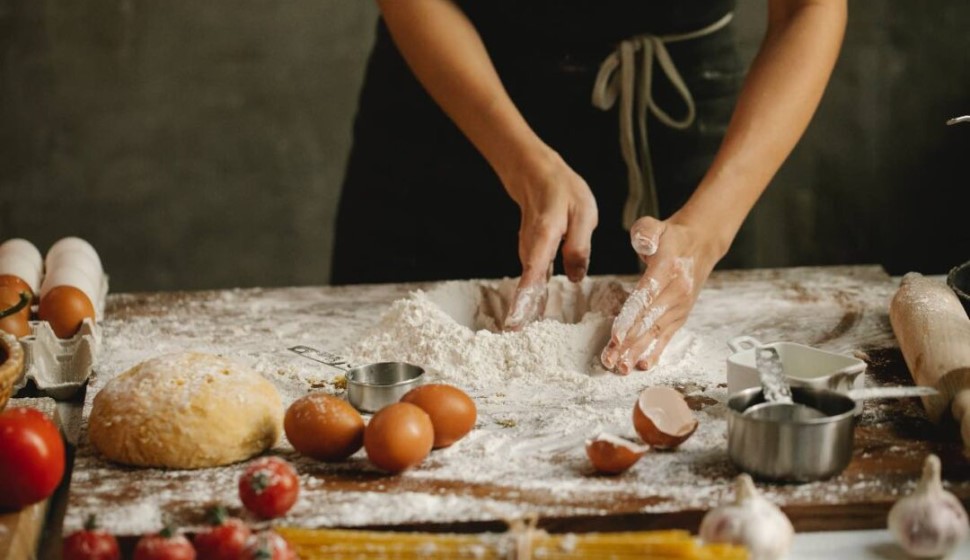The Science Behind Baking: A Delicious Journey
Hey there, fellow bakers! Isn’t it incredible how we take some everyday stuff like flour, sugar, and eggs, and turn them into mouthwatering delights? It’s like kitchen magic at its best. But have you ever stopped to ponder the science behind all this culinary wizardry? Well, let’s take a scrumptious journey through the world of baking and explore the mesmerizing chemistry and physics that make our baked treats rise, turn golden, and taste absolutely divine. So, grab your apron, preheat that oven, and let’s dive headfirst into the delicious science of baking!

The Building Blocks of Baking: Flour, Sugar, and Eggs
We all know the basics – flour, sugar, and eggs – are the foundation of most baked goods. Flour provides structure, sugar adds sweetness, and eggs contribute moisture and binding power. But the real magic unfolds when we get these ingredients to dance together in just the right proportions.
Flour

Flour, well, it’s no ordinary powder. It’s packed with proteins known as glutenin and gliadin. Add water, and voilà, they bond to create gluten, the structural superhero of the baking world. However, tread carefully, as overworking it can turn your treats into a toughness contest. Plus, the type of flour you choose, whether it’s all-purpose, cake flour, or whole wheat, can completely change the game.
Sugar
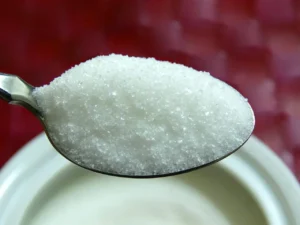
Sugar, apart from making things sweet, has a profound impact on texture. When exposed to heat, sugar caramelizes and brings out that golden-brown magic in your cookies and cakes. And here’s the twist – different sugars like granulated, brown, or powdered add both flavor and texture variations.
Eggs
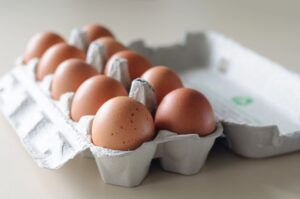
Let’s talk about eggs, the unsung heroes of your mixing bowl. They come with proteins that are all about emulsifying fats and creating a rock-solid structure. The yolks bring moisture to the party, while the whites contribute to leavening. It’s basically a mini chemistry experiment happening right there in your mixing bowl. Who knew, right?
The Role of Leavening Agents: Making Things Rise
Ever wondered how your bread gets that airy texture or your cake rises to perfection? Well, here’s the scoop – it’s all thanks to leavening agents. These baking superheroes include baking soda, baking powder, and yeast, and they know how to get the dough party started.
Baking Soda

Baking soda, or sodium bicarbonate for the scientifically inclined, needs a little help from an acid like buttermilk or yogurt. When they come together, it’s like fireworks. They release carbon dioxide gas, causing your batter to puff up. That’s what gives pancakes and muffins their light and fluffy texture.
Baking Powder

Baking powder, on the other hand, is like a double agent. It packs both an acid and a base and releases carbon dioxide in two stages. First, when mixed with wet ingredients, and second, when it hits the heat in the oven. That double play is what gives your baked goods an extra lift.
Yeast

There’s yeast, the microorganism maestro. It’s the primary leavening agent in bread. Yeast feasts on the sugars in the dough, creating carbon dioxide and a bit of alcohol. The carbon dioxide gets trapped in the dough, making bubbles, and causing the bread to rise. It’s basically a bakery party in there!
Heat Transfer and Baking: How Temperature Affects Your Bake
Now, let’s talk about heat transfer in baking. It’s all about knowing how temperature affects your baked goods. Once your batter or dough goes into the oven, a lot of science starts happening.
Conduction is the transfer of heat through direct contact. Your baking sheets and pans conduct heat to your cookies or cakes, ensuring they cook evenly.
Convection is like an oven’s wind machine. It involves hot air circulating around, making sure your baked goods rise uniformly and brown to perfection.
Radiation, well, that’s the heat from the oven’s heating elements to your food. It’s what gives your bread that crispy crust while keeping it soft inside. Talk about the perfect combo!
Maillard Reaction: The Secret Behind That Golden Brown Crust
Ever wondered what’s behind that gorgeous golden-brown crust on your baked goodies? It’s called the Maillard reaction, and it’s a delicious science dance that happens when amino acids (from proteins) and reducing sugars (like glucose and fructose) get together at high temperatures. This reaction isn’t just about looks; it’s all about flavor. It’s what makes your baked treats irresistible to both your eyes and taste buds.
Gluten: The Stretchy Protein – What It Means for Your Bread
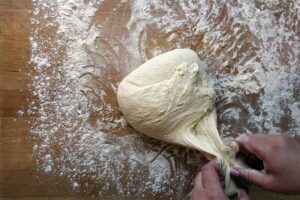
Gluten is often seen as the enemy in the world of gluten intolerance, but in baking, it’s a hero. Gluten is a protein that forms when water is added to flour, and it’s what gives your bread its structure.
When you knead dough, you’re essentially building up the gluten structure, creating elasticity and allowing the dough to trap carbon dioxide produced by yeast. This process results in a light and airy bread with a chewy texture.
The Chemistry of Sweetness: Sugar’s Magical Touch

Sugar isn’t just about sweetness; it’s got some tricks up its sleeve. It has a hygroscopic nature, which means it loves water. It holds onto it for dear life, preventing your treats from turning into dry, crumbly disappointments. Plus, it joins the Maillard reaction party we talked about earlier, enhancing both color and flavor. It’s like the fairy dust of the baking world!
Egg-cellent Emulsifiers: Why Eggs Are a Baking Must-Have

Eggs do more than you might think in baking. They’re the ultimate emulsifiers, helping two usually unmixable ingredients like oil and water blend together seamlessly. So, whether you’re making a cake, cookies, or a creamy custard, eggs play a pivotal role in getting those wet and dry ingredients to form a happy alliance. And that’s the secret to achieving the perfect texture and consistency in your baked goods.
Fats and Oils: Beyond Flavor
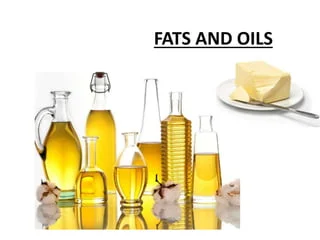
Fats and oils aren’t just there for flavor; they’re also your go-to moisture and tenderness providers. Like sugar, they’re part of the Maillard reaction crew, adding that luscious golden-brown color. But they’ve got another trick up their sleeves – they coat the flour particles, preventing excessive gluten formation. That’s what gives your baked goods that delicate, melt-in-your-mouth texture.
The Importance of Timing: Baking Time and Temperature
Baking is all about timing. Here are some crucial timing tips for achieving baking perfection:
Oven Temperature Control
Your oven’s temperature is a game-changer. Invest in an oven thermometer to ensure it’s on point. The right temperature guarantees proper baking and saves you from undercooked or burnt disasters.
Preheating
Don’t skip the preheating step. It’s crucial. Preheating ensures your creations hit the correct temperature from the get-go. Most recipes specify the preheating time, so be patient and let that oven reach the desired temperature before you work your magic.
Baking Time
Every recipe comes with a recommended baking time, but environmental factors and your oven’s quirks can play tricks. Keep a close eye toward the end of that time to avoid overbaking. No one wants dry and unappetizing baked goods.
Toothpick Test
Here’s a trusty method: the toothpick test. Insert a toothpick into the center of your creation, and if it comes out clean, your baked goodie is ready. No batter or crumbs sticking – that’s the goal. If you see any wetness, give it a few more minutes and retest.
Cooling Time
Once your baked treasures emerge from the oven, they need time to cool properly. Cooling is like an extension of the baking process. It lets internal moisture and temperature settle, leading to a better texture and flavor. Rushing this step can result in sad, soggy, or collapsed cakes.
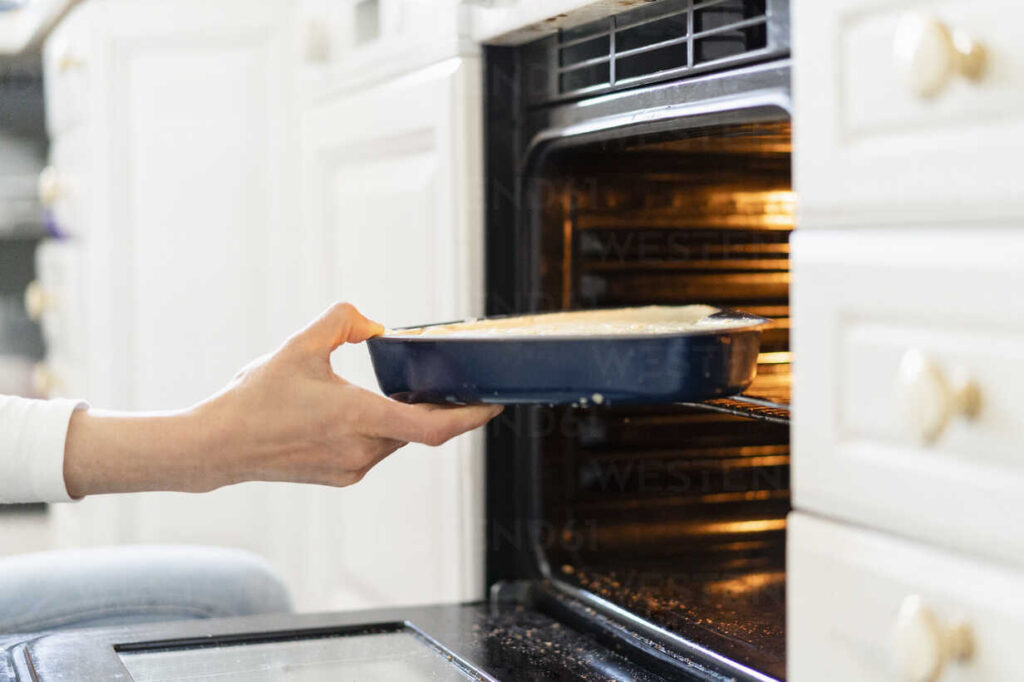
Measuring Matters: Precision in Baking
Baking is a science, and precision is key. Let’s talk about the art of precise measuring:
Use a Kitchen Scale
While measuring cups and spoons are handy, a kitchen scale is the baker’s best friend. It ensures that you get the exact amount of ingredients, especially with flour, which can be packed or fluffy in a cup.
Spoon-and-Level Method
For dry ingredients like flour, go for the spoon-and-level method. Gently spoon the ingredient into the measuring cup and level it off with a flat edge. Avoid any tapping or shaking, as this can result in too much ingredient and disastrous outcomes.
Liquid Measuring Cups
Liquid ingredients deserve their own special cups. Fill to the desired mark, and check at eye level for precision. Even a few extra milliliters of liquid can mess with your final product’s texture.
Baking Soda vs. Baking Powder: Choose Wisely

Baking soda and baking powder may seem similar, but they’re not interchangeable. Knowing when to use each is the key to baking success:
Baking Soda
When your recipe includes acidy ingredients like buttermilk, yogurt, vinegar, or citrus juice, that’s when baking soda shines. It reacts with acid immediately, producing carbon dioxide right away. So, get that batter in the oven pronto.
Baking Powder
Baking powder is your all-rounder. It has both acid and base, so it works in recipes without naturally occurring acid. It releases carbon dioxide in two stages, which means you’ve got some flexibility in your baking process.
The Cooling Process: Resting for Perfection
The baking journey doesn’t end when you pull your creations from the oven. Cooling is a crucial part of the process:
Settling
Resist the temptation to dive right into your freshly baked treats. They need time to settle. While baking, their structure changes, and they’re delicate. Rushing things can lead to collapse.
Flavor Development
Believe it or not, many baked goods, like cookies and cakes, actually improve in flavor as they cool. The flavors mingle, and the texture becomes even more delightful. It’s like they’re having a secret party while you wait.
Icing and Frosting
If your creation is destined for some icing or frosting, patience is key. Let it cool entirely. Applying icing to a warm cake can be a gooey mess. Waiting ensures a clean canvas for your culinary artistry.
Baking Science in Gluten-Free Baking
Gluten-free baking is a whole different ball game. It involves replacing traditional wheat flour with alternatives like almond flour, coconut flour, or rice flour. But the challenge is recreating the structure and texture that gluten provides. That’s where ingredients like xanthan gum or guar gum come into play as binders to compensate for the lack of gluten. Be prepared for some experimentation, as textures and flavors may vary from traditional recipes.
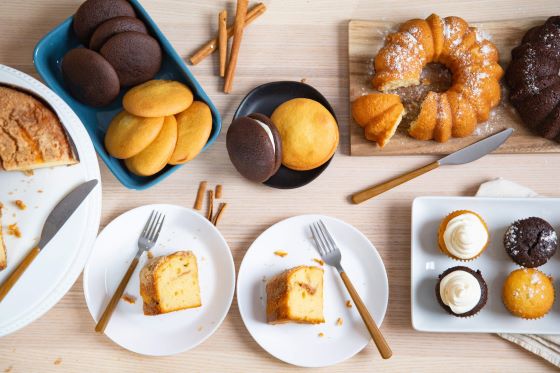
The Future of Baking: A Technological Revolution
As technology advances, so does the world of baking. Innovations like precision ovens with built-in temperature control, smart scales for precise measurements, and recipe apps catering to dietary restrictions are becoming more common. The future of baking promises more accessibility, convenience, and creativity in the kitchen. Get ready for a whole new world of baking possibilities!
Conclusion
Baking isn’t just an art; it’s a mouthwatering science. Understanding the chemistry and physics behind the process can elevate your skills and lead to irresistible results. Whether you’re a newbie or a seasoned baker, the science behind baking is a journey worth taking. So, the next time you’re whipping up your favorite treat, remember that there’s a whole world of science inside your oven, making your kitchen a delectable laboratory. Happy baking, my fellow kitchen scientists!
Frequently Asked Questions
Why is preheating the oven so important in baking?
Preheating the oven ensures that your baked goods are exposed to the correct temperature from the very start. This is crucial because different temperatures at the beginning of baking can lead to uneven results. Preheating also allows for the Maillard reaction to kick in immediately, helping your baked goods achieve that beautiful golden brown crust.
What’s the difference between baking soda and baking powder, and can I substitute one for the other?
The main difference between the two is that baking soda requires an acidic component to activate, while baking powder contains its own acid. In most cases, they are not interchangeable, as substituting one for the other can affect the flavor and texture of your baked goods. Always follow the recipe’s leavening agent instructions for the best results.
How can I prevent my cakes from sinking in the middle?
Cakes sinking in the middle are often a result of underbaking. To prevent this, make sure to bake your cake until a toothpick inserted in the center comes out clean or with a few moist crumbs attached. Avoid opening the oven door frequently during baking, as this can cause sudden temperature changes, leading to cake collapse.
Are there any exciting baking innovations on the horizon?
Absolutely! The world of baking is continually evolving. Innovations such as precision ovens, smart kitchen scales, and recipe apps are making baking more accessible and precise. Additionally, there is a growing emphasis on dietary-specific baking, including gluten-free and vegan options. The future of baking promises more convenience and creativity in the kitchen.
Can I adapt traditional recipes for gluten-free baking?
Adapting traditional recipes for gluten-free baking is possible, but it requires some experimentation. You’ll need to replace wheat flour with gluten-free alternatives like almond flour, rice flour, or coconut flour. Additionally, consider using binders like xanthan gum or guar gum to mimic the binding properties of gluten. Keep in mind that the texture and flavor may differ from traditional recipes, so be prepared for some trial and error.
In the world of baking, science and art come together to create the wonderful treats we all love. Whether you’re a novice or a seasoned baker, understanding the fundamental science behind baking can significantly enhance your skills and the quality of your baked goods. So, the next time you’re in the kitchen, mixing ingredients and preheating your oven, remember that you’re also conducting delicious experiments in the world of culinary science. Enjoy your baking journey!

